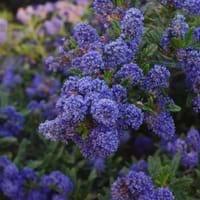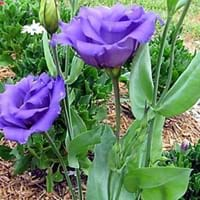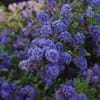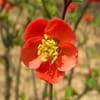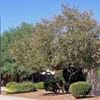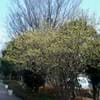Life Span
Perennial
Biennial
Origin
Hybrid origin, Northwestern United States, California, Canada
Southwestern United States, Mexico
Types
New Jersey tea,Maritime ceanothus,Ceanothus connivens
Not Available
Habitat
Rocky Mountains, Scrubs
gardens, Grassland, River side
USDA Hardiness Zone
5-8
Not Available
Sunset Zone
4, 5, 6, 7, 8, 9, 14, 15, 16, 17, 18, 19, 20, 21, 22, 23, 24
21,22
Habit
Oval or Rounded
Upright/Erect
Flower Color
White
Blue, Lavender, Blue Violet
Flower Color Modifier
Not Available
Bicolor
Fruit Color
Not Available
Non Fruiting Plant
Leaf Color in Spring
Lemon yellow
Gray Green
Leaf Color in Summer
Green
Gray Green
Leaf Color in Fall
Red, Bronze
Gray Green
Leaf Color in Winter
Not Available
Light Green
Leaf Shape
Club - shaped
Oval
Plant Season
Spring, Summer, Fall
Spring, Summer
Sunlight
Partial Sun, Partial shade
Full Sun, Partial Sun
Type of Soil
Clay, Loam, Sand
Clay, Loam, Sand
The pH of Soil
Acidic, Neutral
Neutral, Alkaline
Soil Drainage
Average
Well drained
Bloom Time
Early Spring
Spring, Late Spring, Early Summer, Summer, Late Summer
Tolerances
Not Available
Not Available
Where to Plant?
Ground, Pot
Container, Ground, Pot
How to Plant?
Rooted stem cutting, Seedlings
Seedlings, Stem Planting
Plant Maintenance
Medium
Medium
Watering Requirements
Do Not over Water
Keep the ground moist but not water-logged, Requires watering in the growing season, Water more in summer
In Summer
Lots of watering
Lots of watering
In Spring
Moderate
Moderate
In Winter
Average Water
Average Water
Soil pH
Acidic, Neutral
Alkaline, Neutral
Soil Type
Clay, Loam, Sand
Clay, Loam, Sandy
Soil Drainage Capacity
Average
Well drained
Sun Exposure
Partial Sun, Partial shade
Full Sun, Partial Sun
Pruning
Remove damaged leaves, Remove dead branches, Remove dead leaves
Remove damaged leaves, Remove dead branches, Remove dead leaves
Fertilizers
All-Purpose Liquid Fertilizer
All-Purpose Liquid Fertilizer
Pests and Diseases
Not Available, Red blotch
Red blotch
Plant Tolerance
Drought
Drought
Flower Petal Number
Single
Single
Foliage Texture
Medium
Medium
Foliage Sheen
Matte
Matte
Attracts
Birds
Bees, Butterflies
Allergy
Not Available
no allergic reactions
Aesthetic Uses
Formal Garden
Beautification, Bouquets
Beauty Benefits
Not Available
Not Available
Environmental Uses
Air purification
Air purification
Medicinal Uses
Not Available
No Medicinal Use
Part of Plant Used
Leaves
Flowers
Other Uses
Basketary
Showy Purposes, Used as Ornamental plant
Used As Indoor Plant
No
Sometimes
Used As Outdoor Plant
Yes
Yes
Garden Design
Feature Plant, Foundation, Hedges, Mixed Border
Cutflower, Edging, Feature Plant, Foundation
Botanical Name
CEANOTHUS 'Concha'
EUSTOMA grandiflorum 'Florida Blue'
Common Name
Wild lilac
Florida Blue Lisianthus, Lisianthus
In Hindi
Wild Lilac
फ्लोरिडा Lisianthus
In German
Säckelblumen
Florida Lisianthus
In French
Wild Lilac
Floride Lisianthus
In Spanish
Ceanothus
lisianthus Florida
In Greek
Wild Lilac
Φλόριντα lisianthus
In Portuguese
Ceanothus
Florida Lisianthus
In Polish
Wild Lilac
Florida Eustoma
In Latin
Wild Lilac
Florida Lisianthus
Phylum
Tracheophyta
Not Available
Class
Magnoliopsida
Not Available
Order
Rosales
Gentianales
Family
Rhamnaceae
Gentianaceae
Clade
Angiosperms, Eudicots, Rosids
Angiosperms, Asterids, Eudicots
Tribe
Not Available
Not Available
Subfamily
Not Available
Paperveroideae
Number of Species
Not Available
Properties of Wild Lilac and Florida Lisianthus
Wondering what are the properties of Wild Lilac and Florida Lisianthus? We provide you with everything About Wild Lilac and Florida Lisianthus. Wild Lilac has thorns and Florida Lisianthus doesn't have thorns. Also Wild Lilac does not have fragrant flowers. Wild Lilac has allergic reactions like Not Available and Florida Lisianthus has allergic reactions like Not Available. Compare all the properties and characteristics of these two plants. Find out which of these plant can be used as indoor plant. If you are interested to decorate your house and garden, find out aesthetic uses, compare them and select the plant which will beautify your surrounding. Along with beautification, try comparing medicinal and edible uses of Wild Lilac and Florida Lisianthus and you can choose the plant having best and most benefits.
Season and Care of Wild Lilac and Florida Lisianthus
Season and care of Wild Lilac and Florida Lisianthus is important to know. While considering everything about Wild Lilac and Florida Lisianthus Care, growing season is an essential factor. Wild Lilac season is Spring, Summer and Fall and Florida Lisianthus season is Spring, Summer and Fall. The type of soil for Wild Lilac is Clay, Loam, Sand and for Florida Lisianthus is Clay, Loam, Sand while the PH of soil for Wild Lilac is Acidic, Neutral and for Florida Lisianthus is Neutral, Alkaline.
Wild Lilac and Florida Lisianthus Physical Information
Wild Lilac and Florida Lisianthus physical information is very important for comparison. Wild Lilac height is 120.00 cm and width 120.00 cm whereas Florida Lisianthus height is 25.40 cm and width 25.40 cm. The color specification of Wild Lilac and Florida Lisianthus are as follows:
Wild Lilac flower color: White
Wild Lilac leaf color: Lemon yellow
Florida Lisianthus flower color: Blue, Lavender and Blue Violet
- Florida Lisianthus leaf color: Gray Green
Care of Wild Lilac and Florida Lisianthus
Care of Wild Lilac and Florida Lisianthus include pruning, fertilizers, watering etc. Wild Lilac pruning is done Remove damaged leaves, Remove dead branches and Remove dead leaves and Florida Lisianthus pruning is done Remove damaged leaves, Remove dead branches and Remove dead leaves. In summer Wild Lilac needs Lots of watering and in winter, it needs Average Water. Whereas, in summer Florida Lisianthus needs Lots of watering and in winter, it needs Average Water.
